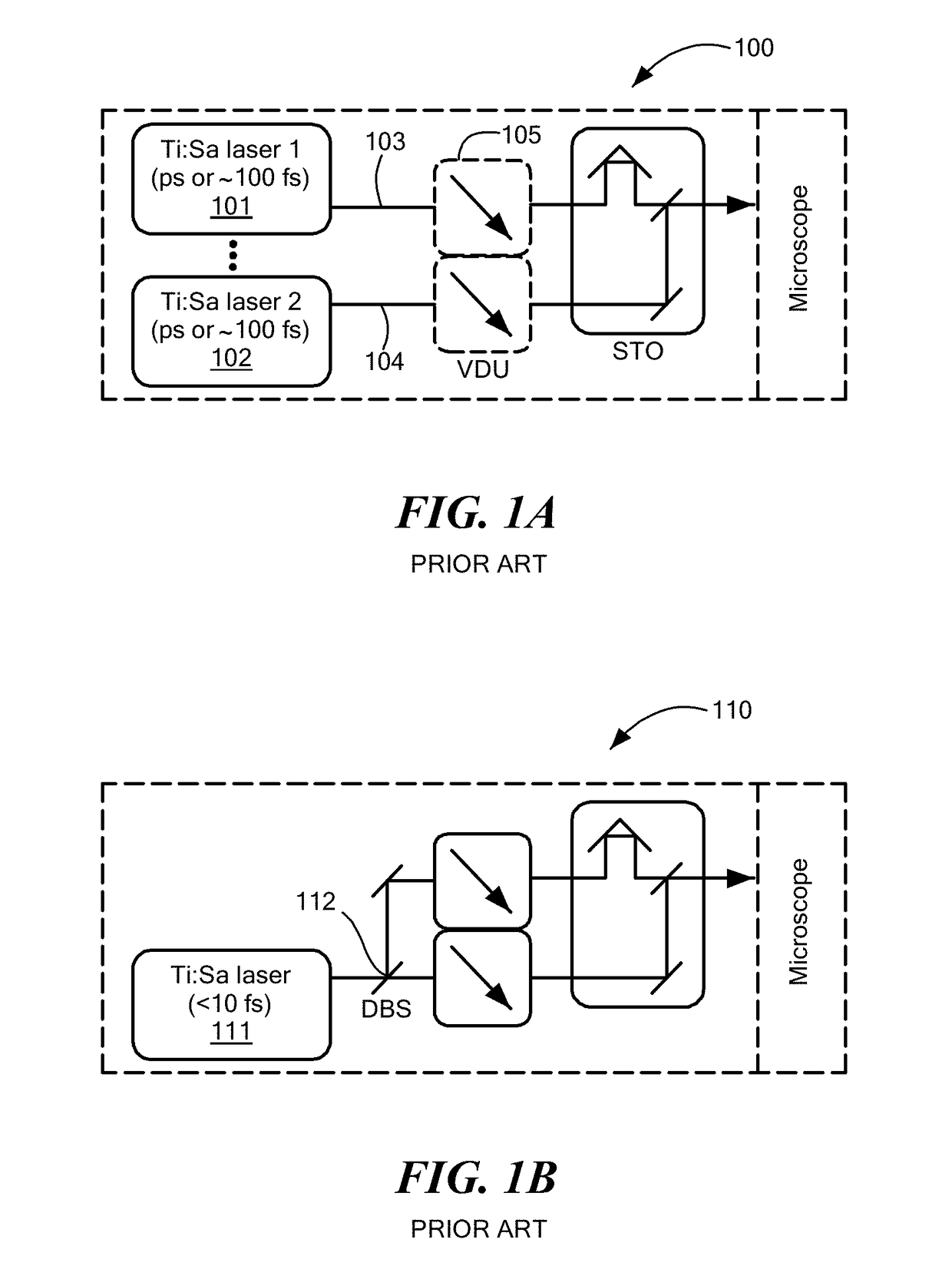Molecular Imaging Biomarkers
a biomarker and molecular imaging technology, applied in the field of molecular imaging biomarkers, can solve the problems of critical limitation, critical limitation, and non-linearity of stain-free non-linear imaging techniques, and achieve enhanced local invasion, increased photodamage risk, and promotion of tumor malignancy
- Summary
- Abstract
- Description
- Claims
- Application Information
AI Technical Summary
Benefits of technology
Problems solved by technology
Method used
Image
Examples
example i
n-Induced Rat Mammary Tumor Model
[0097]A well-known preclinical carcinogen-induced rat mammary tumor model was used, and a mammary tumor / tissue specimen (5×5 mm2 area with ˜2 mm thickness) was excised from a rat six weeks after carcinogen injection. The collection of the multimodal multiphoton images began within minutes after dissection from a site with cleanly delineated adipose and stromal regions, and standard H&E histology was subsequently performed to locate an anatomically similar site for comparison. FIGS. 2A-2C illustrate the mesoscopic organization of biological microstructures revealed in co-localized multiphoton images of two rat mammary specimens and absent from corresponding FFPE-H&E histology images, as now described. Area-integrated CARS spectra over 34 hyperspectral images confirm the presence of a significant R3050 peak as a potential cancer biomarker. FIG. 2A shows that different histochemical components of a tumor are selectively revealed by different single-moda...
example ii
ve Breast Cancer Biomarkers
[0101]A potential quantitative breast cancer biomarker was demonstrated for the first time in the rat model discussed above. It was discovered that tumors can be objectively discriminated against non-tumor specimens by the emergence of an R3050 spectral peak in the hyperspectral image-integrated CARS spectra, shown in FIGS. 2A-2C and 8. This R3050 signal is not from the carcinogen (N-nitroso-N-methylurea) injected into the rats because spectral focusing of CARS on a saturated water solution of the carcinogen (1.4% by weight) did not yield any signal at R3050. Because regions within mammary specimens can be largely classified into stromal regions (FIG. 7 and adipose regions (FIG. 9) that account for 25% and 75% of the total area from control specimens, respectively, it is more representative to examine comparable tumor and non-tumor specimens that contain both regions.
[0102]FIG. 9 combines co-localized single-modality multiphoton images in mammary adipose r...
example iii
of Extracellular Vesicle Enrichment and Metabolic Switch Visualized Label-Free in the Tumor Microenvironment
[0112]The in vivo role of extracellular vesicles has been relatively elusive without observing them label-free in tissue. By visualizing these vesicles in situ in the unperturbed tumor microenvironment, the present inventors have found a direct link of their enrichment with the metabolic switch toward biosynthesis. Thus, these vesicles may serve as the signaling mediators from the tumor cells to the abundant stromal cells in order to initiate the metabolic switch, which may in turn induce various macroscopic events in the tumor microenvironment. Genetic modification of the stromal cells can occur when they accept the vesicles with RNA, according to J. Skog et al., “Glioblastoma microvesicles transport RNA and proteins that promote tumour growth and provide diagnostic biomarkers,” Nat. Cell Biol., vol. 10, pp. 1470-76 (2008), incorporated herein by reference. The observations m...
PUM
| Property | Measurement | Unit |
|---|---|---|
| diameter | aaaaa | aaaaa |
| coupling power | aaaaa | aaaaa |
| coupling power | aaaaa | aaaaa |
Abstract
Description
Claims
Application Information
 Login to View More
Login to View More - R&D
- Intellectual Property
- Life Sciences
- Materials
- Tech Scout
- Unparalleled Data Quality
- Higher Quality Content
- 60% Fewer Hallucinations
Browse by: Latest US Patents, China's latest patents, Technical Efficacy Thesaurus, Application Domain, Technology Topic, Popular Technical Reports.
© 2025 PatSnap. All rights reserved.Legal|Privacy policy|Modern Slavery Act Transparency Statement|Sitemap|About US| Contact US: help@patsnap.com



